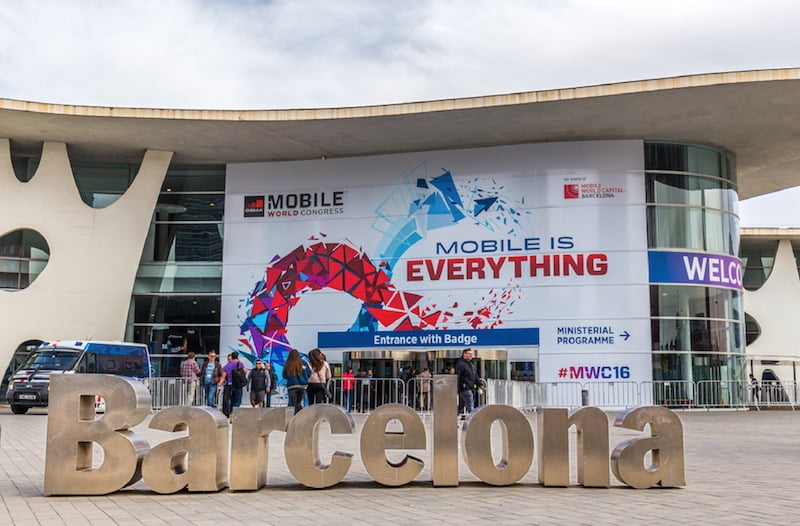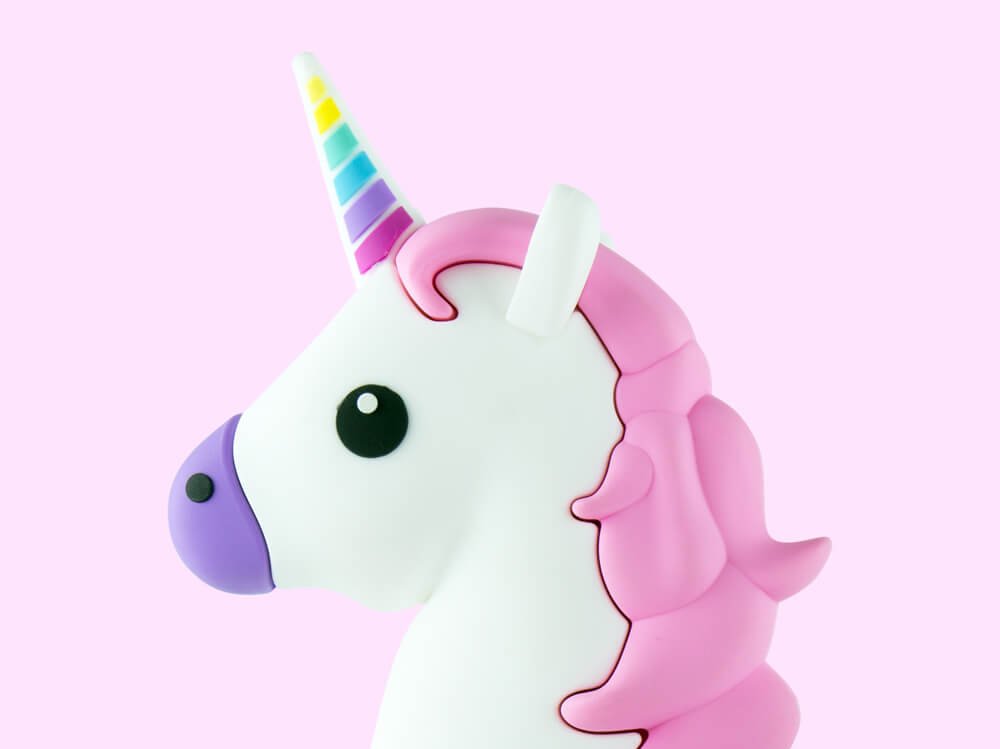There’s conferences, and then there’s Mobile World Congress (MWC) . In essence, it’s a massive maze of tech booths showcasing some of the coolest new tech from around the world. Housed in the Fira Gran Via in Barcelona, at least 100 companies stood in its many halls. Each team held a booth more spectacular than the next.
Just when I thought that I’d wound up at the end of a hall, I would take a breath and walk towards the exit only to realize that the endless dungeon that is MWC kept sprawling before me waiting to be discovered. The gigantic Fira welcomed more than 2200 exhibitors for MWC and despite GPS telling me where I was, and my trusty map at my side, I still, somehow, managed to get lost traversing one booth to the next. During my adventure navigating this maze, I chatted with what felt like an insanely large number of teams. It helped me to learn about their products and tech. Here’s what that stood out to me.
1. TrewGrip

TREWGrip — an odd looking keyboard more reminiscent of a some future SyFy TV show tech than anything to type with . It’s an alternative keyboard approach for people who have to frequently compose on the move. The sales rep brought up an interesting example for a use case. Let’s say you’re a member of the police force and you need to type up a ticket. Well you’d have to go up out of your car, speak to a driver, go back to your car and type up the details on a laptop. With TrewGrip, you can do all this in one step.
Sounds pretty convenient, I thought initially. However upon telling a friend about this, he felt differently.
“Police officers have a lot more to work on before they worry about how quickly they type up tickets.”
If you’re from America, then you know what I mean. Instead, he suggested factory workers, stenographers, or secretaries might benefit from this tech.
A Little More

TREWGrip has Research and Dev kits available at around the $300 mark. The sales rep claimed that the learning curve ranges from 6 hours to one day. I found this amusing as I’ve been trying to get new designers to use Wacom tablets. As simple as they seem, the learning curve is about one week to never. “Never” due to the fact that some designers give up after one day.
Would this tool be practical for programming? The rep claimed so, and I can believe integrating this with standing desks or open space layouts might be useful. There’s something about the ability to type while you’re walking around that’s pretty helpful. Or totally bizarre to the rest of the team in the space. The tool itself fit comfortably and after a quick exercise on the keyboard it became noticeably less awkward typing in this newly designed fashion.
2. LifeTracker — Symbiotic AI
![]()
I let the sales rep (the CEO in this case) try his sales pitch a few times in English before I finally disclosed that I can speak his native tongue of Russian, да. I hoped the pitch would somehow get better after we switched languages, though my Russian skills have drastically gone down. Either that, or the product just didn’t sound any more plausible in another language. Lifetracker is an app that maps your calendar with the types of events you save on it. It assumes a variety of behaviors (like going to the gym, eating, sleeping), and is eventually able to make suggestions. It aims to be able to monitor changes in mood and emotion and make predictions based on this for the user.
For Example
If you schedule going to the gym at 18:00 (6 PM), the app can tell that by this time you’ll be tired and hungry and won’t want to make it, so it might suggest you grab food beforehand, or instead schedule the gym for the morning. Once it notices that you’re riding the subway/train/bus everyday, it might suggest you listen to an audiobook during that time to pick up a skill you’re interested in gaining.
This seemed like a pretty cool utility, but as the app is not out yet, it’s hard to test. If this works, I’m down, but I’ve found that promises of such technology generally fall short in their execution.The solution is provided as a corporate option as well as a consumer version. Once it’s out, I’d love to have an AI run my life for me. Welcome robot overlords, I await your arrival.
3. MEMIO
 Memio is an app that reminds users to take their medication at the correct time of day. It can be programmed to make different suggestions based on the meds and time of day needed to take them. They aim to solve a problem where a significant portion of people do not follow correct dosing rules or forget their meds.
Memio is an app that reminds users to take their medication at the correct time of day. It can be programmed to make different suggestions based on the meds and time of day needed to take them. They aim to solve a problem where a significant portion of people do not follow correct dosing rules or forget their meds.
While seemingly simple and straightforward, Memio solves a real issue for a wide number of people.This product is great for folks with a variety of needs, like Alzheimer’s who have a hard time recalling what medication needs to be taken when.
Don’t think this is just for older folks. The other day my friend couldn’t recall if she could drink alcohol or not because she wasn’t sure if she had taken her medication that day. She’s 28. Knowing her, she probably didn’t. Using this app would have given her the power to get drunk. Err, the opposite of that. The power to get healthy!
4. Iris Bond

On the surface this is an eye tracking system . Super novel and innovative, I know, but the interesting aspect is the presented use case. It’s meant for people who are physically impaired and wouldn’t otherwise be able to use a computer. Instead of physical motion, it uses their eyes to navigate webpages or allow them to type, which is super innovative. In general, there were a lot of eye tracking software and hardware companies at MWC, so many SDK’s to choose from. But, these guys are impressive. They’re basically taking what is a more sophisticated version of the Microsoft Kinect and using it to improve livelihoods.
5. Mint-labs & Qubiotech

Both Mint-labs and Qubiotech are cognitive brain scan tech companies that create software for clinical neuroimaging. By accessing their databases doctors or researchers might be able to diagnose neurological diseases through clinically relevant quantitative data.
A user might upload images of PET or MRI’s and see if there are matches to other scans potentially showing a positive diagnosis. Further, the system then can take these images and add them to the current data to allow for future development of the database. Fairly straightforward, and certainly a positive direction for medical research and diagnostics. However, I couldn’t tell the difference between the service Mint-labs and Qubiotech offered though I’m pretty sure both companies reps tried to convince me that each was unique, like peas in a pod.
6. SMARF Farm & Ericsson Vineyards

A handful of projects at MWC focused on agriculture and IoT. Ericsson had a project called “Connected Vineyards: How IoT (Internet of Things) is enhancing the winemaking industry,” where they discussed their use of sensors to let vintners (aka wine-making people) know when the ground was too dry, at which point the farmer could go to that plot and water it. This felt incredibly unsophisticated and pretty low tech — if you’re gonna do something, go all the way.
As politely as I could muster, I pointed out to the Ericsson Reps that their solution was half-assed at which point they mentioned that the value of their project was not in the use of sensors but in the level of security they had behind the sensor tech. Their sensors were un-hackable. Here is the use case they gave me: Let’s say you’re a farmer and another farmer wants to sabotage your crops. Well they might hack into your sensor grid in order to give false readings. Not with Ericsson tech they won’t! I had no idea the level of clandestine activities and subterfuge that farmers regularly got up to, nor their talent for hiring black hat hackers, but Ericsson certainly set me straight.
A Work In Progress
Luckily, I came upon a small Korean startup that took this concept to its ultimate conclusion. Despite their horribly-named product (SMARF) the system seemed well thought out. They too used sensor tech to decide if a crop needed to be watered, fertilized, or otherwise managed, and then they had it sync with systems to follow up on the needs — ie. water the dry earth without human labor. Of course, this also comes with a handy dandy Android application from which farmers can manage their crops.
Normally, my yearly conference circuit includes the fabled SXSW which I turned down for MWC instead. My findings: If you’re into dungeon crawlers, new technology, pa amb tomaquet and conferences, MWC is a must, albeit, the level of shenanigans is much less than SXSW — that is, if partying is your thing.
Keep up with more of our tech adventures here.




